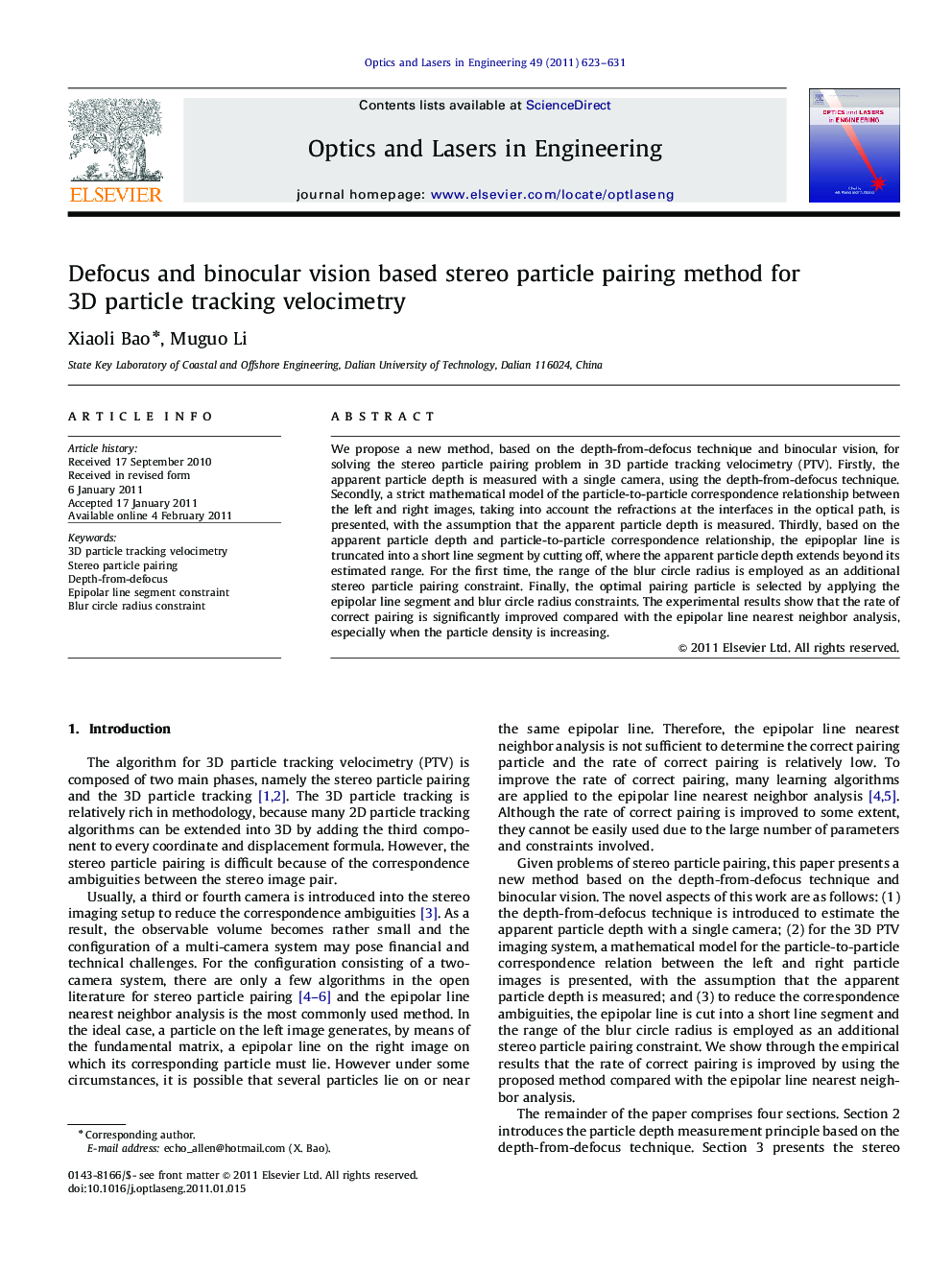| Article ID | Journal | Published Year | Pages | File Type |
|---|---|---|---|---|
| 736125 | Optics and Lasers in Engineering | 2011 | 9 Pages |
We propose a new method, based on the depth-from-defocus technique and binocular vision, for solving the stereo particle pairing problem in 3D particle tracking velocimetry (PTV). Firstly, the apparent particle depth is measured with a single camera, using the depth-from-defocus technique. Secondly, a strict mathematical model of the particle-to-particle correspondence relationship between the left and right images, taking into account the refractions at the interfaces in the optical path, is presented, with the assumption that the apparent particle depth is measured. Thirdly, based on the apparent particle depth and particle-to-particle correspondence relationship, the epipoplar line is truncated into a short line segment by cutting off, where the apparent particle depth extends beyond its estimated range. For the first time, the range of the blur circle radius is employed as an additional stereo particle pairing constraint. Finally, the optimal pairing particle is selected by applying the epipolar line segment and blur circle radius constraints. The experimental results show that the rate of correct pairing is significantly improved compared with the epipolar line nearest neighbor analysis, especially when the particle density is increasing.
Research highlightsThe novel aspects of this work are as follows: (1) the depth-from-defocus technique is introduced to estimate the apparent particle depth with a single camera; (2) for the 3D PTV imaging system, a mathematical model for the particle-to-particle correspondence relation between the left and right particle images is presented, with the assumption that the apparent particle depth is measured; and (3) to reduce the correspondence ambiguities, the epipolar line is cut into a short line segment and the range of the blur circle radius is employed as an additional stereo particle pairing constraint.
